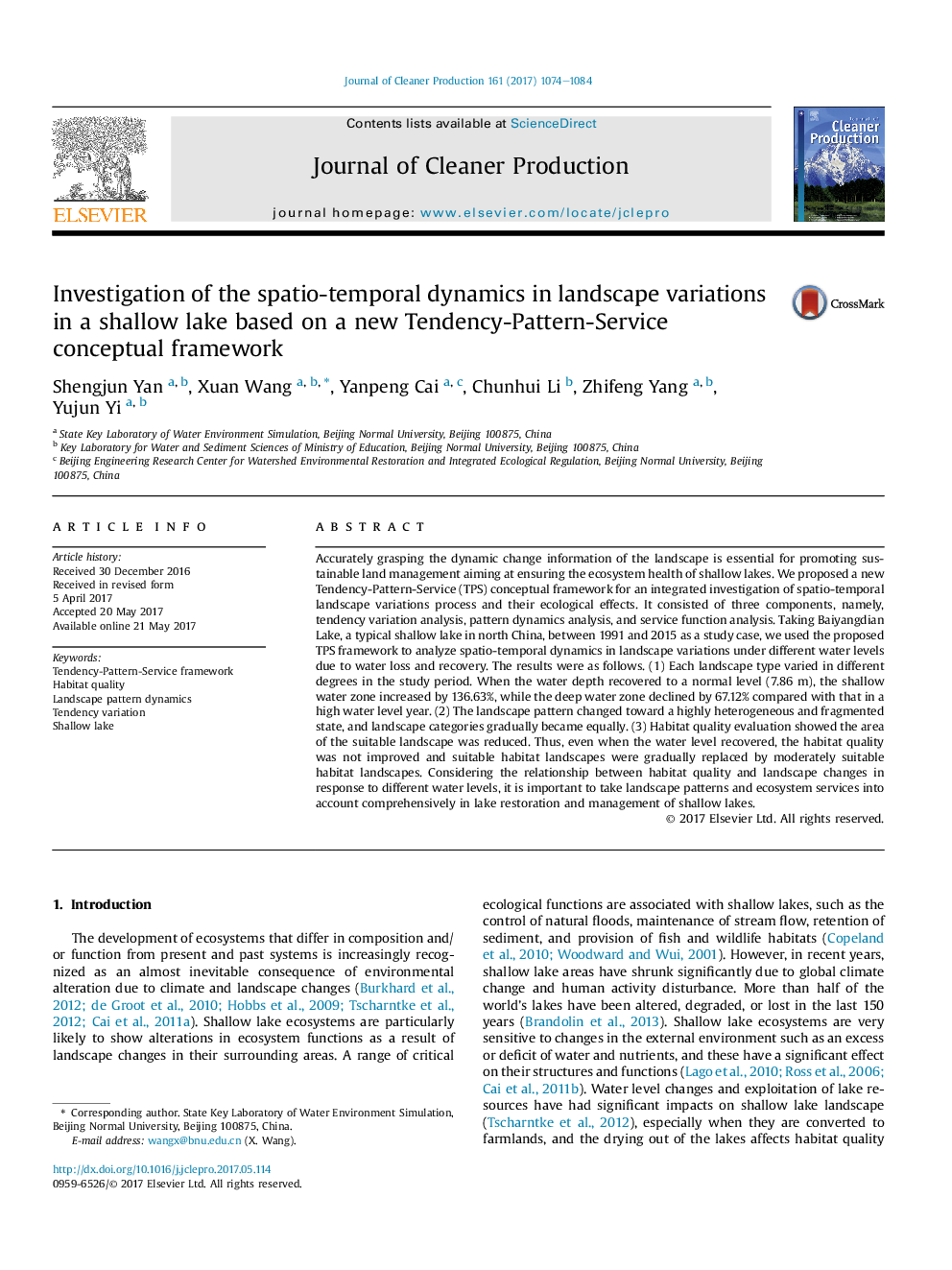| کد مقاله | کد نشریه | سال انتشار | مقاله انگلیسی | نسخه تمام متن |
|---|---|---|---|---|
| 5480907 | 1522093 | 2017 | 11 صفحه PDF | دانلود رایگان |
- TPS conceptual framework was proposed for deep investigation of landscape variations.
- TPS framework integrated information of landscape structures and service functions.
- Transformation matrix, landscape pattern metrics and InVEST model were jointly used.
- Landscape variations had an important effect on habitat quality.
- Water level recovery did not fundamentally improve the quality of habitats.
Accurately grasping the dynamic change information of the landscape is essential for promoting sustainable land management aiming at ensuring the ecosystem health of shallow lakes. We proposed a new Tendency-Pattern-Service (TPS) conceptual framework for an integrated investigation of spatio-temporal landscape variations process and their ecological effects. It consisted of three components, namely, tendency variation analysis, pattern dynamics analysis, and service function analysis. Taking Baiyangdian Lake, a typical shallow lake in north China, between 1991 and 2015 as a study case, we used the proposed TPS framework to analyze spatio-temporal dynamics in landscape variations under different water levels due to water loss and recovery. The results were as follows. (1) Each landscape type varied in different degrees in the study period. When the water depth recovered to a normal level (7.86Â m), the shallow water zone increased by 136.63%, while the deep water zone declined by 67.12% compared with that in a high water level year. (2) The landscape pattern changed toward a highly heterogeneous and fragmented state, and landscape categories gradually became equally. (3) Habitat quality evaluation showed the area of the suitable landscape was reduced. Thus, even when the water level recovered, the habitat quality was not improved and suitable habitat landscapes were gradually replaced by moderately suitable habitat landscapes. Considering the relationship between habitat quality and landscape changes in response to different water levels, it is important to take landscape patterns and ecosystem services into account comprehensively in lake restoration and management of shallow lakes.
Journal: Journal of Cleaner Production - Volume 161, 10 September 2017, Pages 1074-1084
